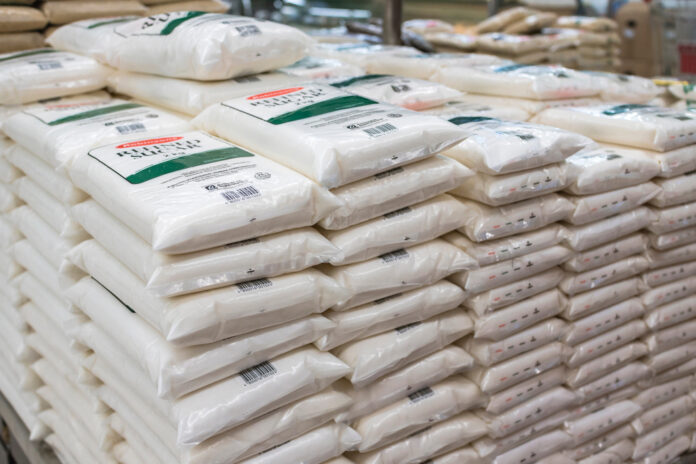The Department of Agriculture (DA) is eyeing national food self-sufficiency within the next few years, driven in part by surging production figures from the country’s sugar industry—an indicator of broader agricultural momentum that could benefit rice and other staple crops.
Agriculture Secretary Francisco P. Tiu Laurel Jr. highlighted the latest performance of the sugar sector as a strong signal that the Philippines is on the right track. According to recent data from the Sugar Regulatory Administration (SRA), led by Administrator and CEO Pablo Luis Azcona, raw sugar production has surpassed the 2-million-metric-ton threshold for the first time since the 2020–2021 crop year.
Crop year 2024–2025 posted an increase of 300,000 metric tons over the earlier projection of 1.7 million metric tons—equivalent to an additional six million bags of sugar.
“This steady growth under the current administration reflects the potential of Philippine agriculture to meet domestic demand targets. With the right conditions and sustained support, we are optimistic the sugar industry can meet the 2.3 million metric ton benchmark,” Laurel said.
While the spotlight today is on sugar, the broader implication is clear: consistent production surges in one key sector bode well for others—particularly rice. The DA believes such trends lay the groundwork for achieving self-sufficiency in rice and reducing reliance on imports, aligning with the administration’s national food security strategy.
Laurel said these gains validate the importance of continued investment, policy support, and infrastructure improvement to maximize agricultural productivity across the board.As of June 8, production output already stood at 2.015M metric tons “with still a few weeks left of milling,” said the DA chief.
In the previous crop year, raw sugar output was 1.922 million metric tons. The 2022-23 crop year recorded 1.799 million metric tons, already a recovery from earlier disruptions caused by weather and supply issues.
Raw sugar production last topped 2 million metric tons in the crop year 2020-2021, when the total output reached 2.14 million metric tons. The continuous rise is being attributed to Pres Marcos approval to gradually change the cropping calendar from August in 2022 to Oct 1 this coming 2025 harvest, which is better suited to climatic conditions and cane maturity, as well as improving soil productivity, better SRA cane varieties, improved coordination among sugar producers, and stronger government support, including the timely release of fertilizers and farm mechanization programs.
“We’re working closely with farmers, millers, and other stakeholders to ensure that this upward trend continues,” Tiu Laurel added. The DA chief said it is the vision of President Ferdinand Marcos Jr. to revitalize the sugar industry by increasing farm yield to eventually make the country one of the major suppliers of sugar to the world and “we are on the right track to achieve this.”
Secretary Tiu Laurel said reforms in sugarcane farm management and expanded block farming efforts are contributing to higher cane yields and better efficiency at the mills. The DA chief also directed SRA administrator Azcona to further improve cane varieties by finding better planting materials elsewhere, which could be used to boost yield, and to quickly contain the spread of red-striped soft scale insects, in order to sustain the increase in production.
Administrator Azcona attributed the increasing raw sugar production to the interventions pushed by the SRA on sugar cane farms across the country.
“The concern and effort of the government under Pres. Marcos and DA Sec Tiu Laurel on improving sugarcane production is the biggest in the history of the SRA, and we are slowly seeing the results. We will continue to push for more improvement with soil improvement, cane varieties, and irrigation and mechanization,” Azcona said.
The SRA chief said the increased sugar output and stable sugarcane prices in recent years have helped local farmers as well. “Lower retail prices also help farmers as they are sugar consumers too,” he said.
He added that with the projected raw sugar production, the domestic supply of the commodity will be sufficient to meet the demand, ensuring stable retail prices of sugar.







